The MSI MEG Z390 ACE Motherboard Review: The Answer To Your USB 3.1 Needs
by Gavin Bonshor on December 17, 2018 12:30 PM EST- Posted in
- Motherboards
- Intel
- Killer
- MSI
- Coffee Lake
- i7-8700K
- Z390
- ACE
- Z390 ACE
Visual Inspection
The MSI MEG Z390 ACE is a full-sized ATX board and represents one of two of the companies enthusiast level Z390 options, the other being the very high-end Z390 Godlike.
The overall design of the MSI Z390 ACE is centered around the rear panel cover. Similar in looks to this is the chipset heatsink and an adjoining, but not quite connected, M.2 heatshield. The most notable element from the aesthetics is the Mystic Light Infinity RGB panel which is housed within the rear panel cover. This panel allows users to customize its color state due to RGB LEDs through the MSI Mystic Light RGB utility. On the board we get an all black design while the heatsinks and rear panel cover have a metallic grey finish. Users can add custom RGB with two 4-pin RGB LED connectors, a single 3-pin RAINBOW LED connector, and for users with a compatible Corsair products, a single 3-pin Corsair LED header. Touching more on headers, the MSI Z390 ACE has a total of seven 4-pin fan headers which are divided into three different areas; one dedicated for the CPU, one for a water pump or AIO and five for case fans.
Taking up a large amount of PCB space on the bottom half of the motherboard are the alternating PCIe slots and M.2 slots. All of the full-length PCIe slots have additional reinforcement, while one of the slots has MSI's branded M.2 Frozr heatshield connected to the large chipset heatsink. The chipset heatink is surrounded with a wave of black plastic which helps it blend in with the rest of the design.
For the PCIe slots, there are a total of three full-length PCIe 3.0 slots which allow for two-way NVIDIA SLI and up to three-way AMD CrossFire. There are also three PCIe 3.0 x1 slots.
| MSI MEG Z390 ACE CPU PCIe Layout | |||
| Number of Installed PCIe Cards on CPU |
PCIe_2 | PCIe_4 | PCIe_5 |
| x1 | x16 | - | - |
| x2 | x8 | x8 | - |
| x3 | x8 | x4 | x4 |
Located in the bottom right-hand corner is a 'basic overclockers toolkit'. This kit consists of a power switch, a reset switch, and a Game Boost OC dial which allows users to select between MSI's preset overclocking profiles. There are seven profiles in total which can be accessed by twisting the dial. Pressing the button enables this, but this can also be changed within the BIOS by clicking the appropriate visual representation of button.
Storage options on the MSI Z390 ACE include SATA and M.2 connectivity. There is a total of six SATA ports which allow users to create RAID arrays including 0, 1, 5 and 10. The ACE is one of just two MSI Z390 models to include three M.2 slots. The top two M.2 slots (M2_1 and M2_2) support for both PCIe 3.0 x4 and SATA drives, whereas M2_3 only has support for PCIe drives. The M.2 slots support RAID 0, 1 and 5. The M.2 slots and the SATA ports do however share bandwidth between each other. The limitations are as follows:
- If M2_1 slot is populated with a SATA drive, SATA3_2 is disabled and visa versa
- If M2_2 slot is populated with a SATA drive, SATA3_5 is disabled and visa versa
- If M2_3 slot is populated with a PCIe drive, SATA3_5 and SATA3_6 will be disabled and visa versa
The power delivery on the MSI Z390 ACE is publicized as featuring a 13-phase setup optimized for use with the Intel Core i9 Coffee Lake processors including the eight-core Core i9-9900K ($550). Lifting off the heatsink reveals that this is consistent with what's advertised. A total of twelve ON Semiconductor ON4C029N high-side MOSFETs and twelve ON4C024N low-side MOSFETs make up the CPU VCore. The VCore on the MSI Z390 ACE motherboard also has six International Rectifier IR3598 doublers on the rear of the PCB which gives VCore an operational phase count of six. This is confirmed by the International Rectifier IR35201 PWM controller which is capable of operating up to eight channels. The power delivery of the MSI Z390 ACE is running in a 6+2 configuration. Providing power to the CPU is a pair of 8-pin 12 V ATX inputs to allow the board to draw more power to the CPU from the power supply when needed.
| Z390 Motherboard Power Delivery Comparison | |||||
| Motherboard | Controller | H-Side | L-Side | Chokes | Doubler |
| ASRock Z390 Taichi | IR35201 (5+2) |
TI 87350D (12) ON FDPC5939SG (2) |
14 | IR3598 (6) |
|
| ASRock Z390 Taichi Ultimate | IR35201 (5+2) |
TI 87350D (12) ON FDPC5939SG (2) |
14 | IR3598 (6) |
|
| ASRock Z390 Phantom Gaming 9 | IR35201 (5+2) |
TI 87350D (12) ON FDPC5939SG (2) |
14 | IR3598 (6) |
|
| GIGABYTE Z390 Aorus Master | IR35201 (6+2) |
IR3553 (12) |
14 | IR3599 (6) |
|
| GIGABYTE Z390 Aorus Ultra | ISL69138 (6+1) |
SiC634 (12) |
13 | ISL6617A (6) |
|
| GIGABYTE Z390 Aorus Pro WiFi | ISL69138 (6+1) |
SiC634 (12) |
13 | ISL6617A (6) |
|
| GIGABYTE Z390 Aorus Pro | ISL69138 (6+1) |
SiC634 (12) |
13 | ISL6617A (6) |
|
| GIGABYTE Z390 Aorus Elite | ISL69138 (6+1) |
SiC634 (12) |
13 | ISL6617A (6) |
|
| GIGABYTE Z390 I Aorus Pro WiFi | IR35201 (6+2) |
IR3553 (6) |
8 | - | |
| GIGABYTE Z390 Gaming SLI | ISL69138 (5+2) |
PPak (10) |
12 | ISL6617A (5) |
|
| GIGABYTE Z390 Gaming X | ISL69138 (5+2) |
PPak (10) |
12 | ISL6617A (5) |
|
| GIGABYTE Z390 UD | ISL69138 (5+2) |
PPak (10) |
12 | ISL6617A (5) |
|
| MSI MEG Z390 ACE | IR35201 (6+2) |
ON4C029N (12) |
ON4C024N (12) |
13 | IR3598 (6) |
| Supermicro C9Z390-CG | MP2949A (6) MP2940A (2) |
MP86945 (6) MP86908 (2) |
8 | - | |
The memory has its own pair of ON4C024N low-side and ON4C029N high-side MOSFETs while the SoC has one ON4C024N low-side and one ON4C029N high-side MOSFET. The memory section also includes a Nuvoton NCT3101S low input voltage DDR termination regulator. The power delivery includes a total of thirteen inductors with one of them coming from Texas Instruments but is indistinguishable to determine which; the remaining twelve are marked with R40 which signifies an inductance of 400 nH and a current rating of 60 A per inductor.
Memory specifications on paper look very high-end for enthusiasts as the MSI Z390 ACE has native support for up to DDR4-4500. The MSI MEG Z390 ACE has a total of four memory slots and allows users to install up to a maximum of 64 GB in total. On the slots, MSI has included a coating of Steel Armor and each slot has an installation clasp on either side for installation.
As with the majority of Z390 motherboards currently on the market, the MSI Z390 ACE uses a Realtek ALC1220 HD audio codec. In addition to this is an ESS Sabre 9018 32-bit DAC which offers support for up to 8-channels. Surrounding the audio is a total of nine Nippon Chemi-con gold audio capacitors with five of them being large and the remainder being small. The Realtek ALC1220 HD codec is covered by the tail end of the plastic rear panel cover but doesn't feature any EMI shielding or isolation. The audio PCB does feature a physical separation line from the rest of the PCB.
One of the main features of the MSI Z390 ACE is a pre-mounted rear I/O shield. This fits in with MSI's red and black gaming theme, but it may have looked better to unite this with the inclusive grey and black heatsinks. The USB real-estate consists of five USB 3.1 Gen 2 Type-A ports, a single USB 3.1 Gen 2 Type-C port and four USB 2.0 ports. One of the rear panel USB 3.1 Gen 2 Type-A ports and the single USB 3.1 Gen2 Type-C port are controlled by an ASMedia ASM3142 chip. The Z390 ACE has two USB 2.0 headers and two USB 3.1 Gen1 headers. The two included USB 3.1 Gen2 Type-C headers are driven directly from the Z390 chipset.
Handily located on the rear panel for easy access is a clear CMOS button and a BIOS Flashback+ button. Networking comes from the E2500 network port as well as the 2T2R Intel 9560 Wi-Fi 802.11ac Wave 2 module. It should be noted that MSI Z390 ACE has no video outputs.
What's in The Box
Bundled along with the MSI MEG Z390 ACE motherboard is a rather mediocre set of accessories given the commanded asking price of $290. The most noteworthy inclusions are an NVIDIA HB two-way SLI bridge, four SATA cables (two right-angled, two straight-angled) and a driver installation disc.
- Four SATA cables (two right-angled and two-straight angled)
- Two Wi-Fi Antennas (2x2)
- SLI HB Bridge
- Three RGB LED Extension Cables
- MSI True Gaming Case Badge
- MSI Warranty Card
- MSI Gaming Promotional Card
- SATA Label Stickers
- Quick Install Guide
- Instruction Manual
- Driver Installation CD



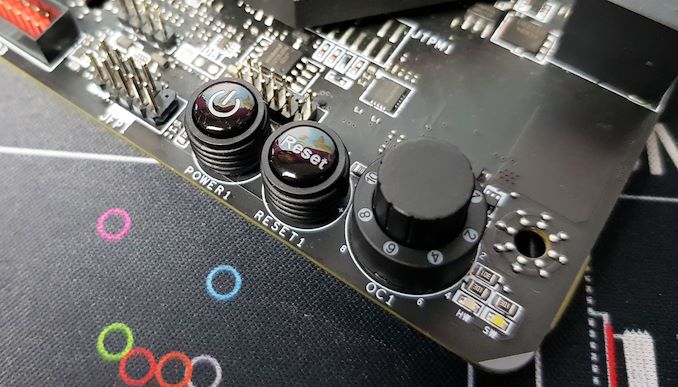
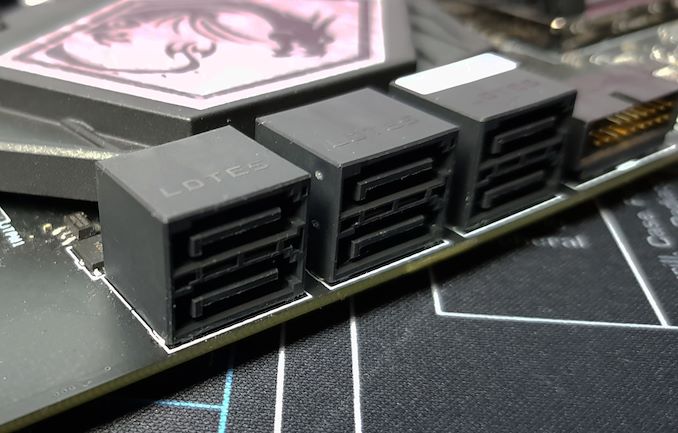

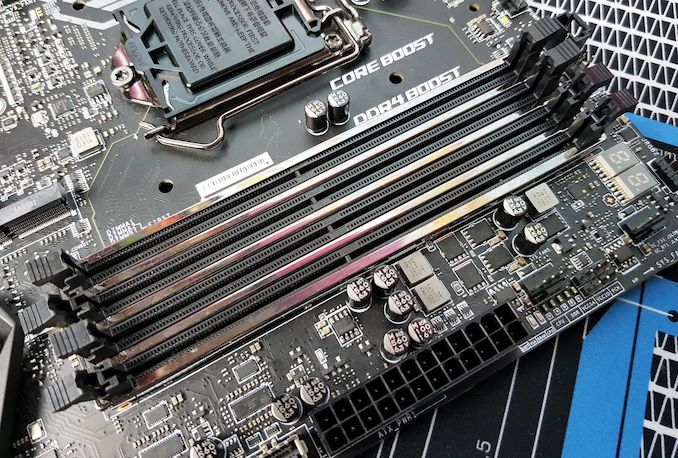
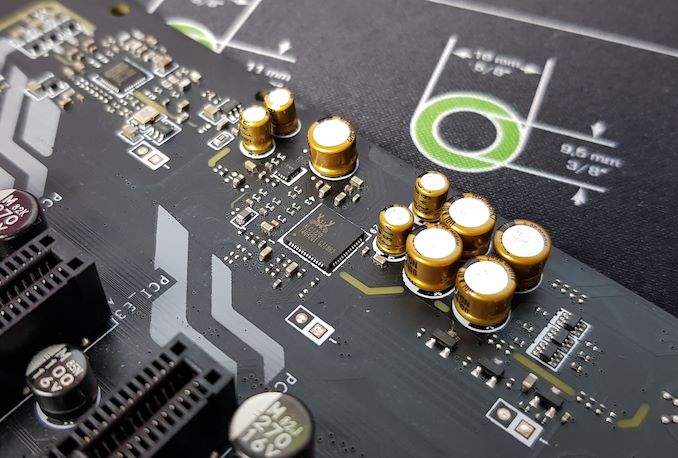

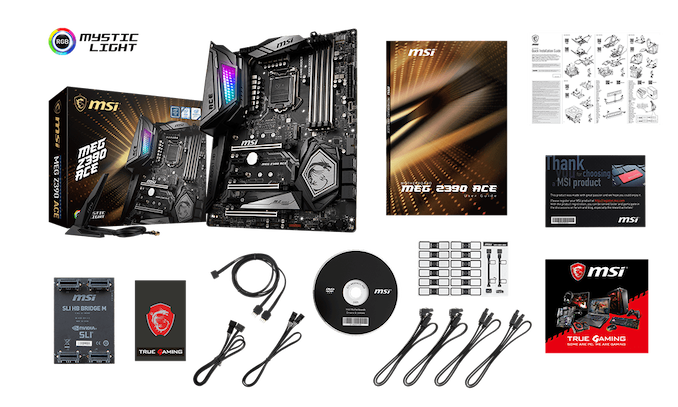








25 Comments
View All Comments
rsandru - Monday, December 17, 2018 - link
Well, that's the problem, I'm already on an HEDT platform but I'm missing on the the fastest CPUs for gaming in exchange of many PCI-E lanes and quad-channel memory that I don't need.I suppose I just can't have it all on the consumer platform for the time being...
CheapSushi - Monday, December 17, 2018 - link
Are you talking just about the cheapest platforms? Because it does exist already.oRAirwolf - Monday, December 17, 2018 - link
Stopped reading as soon as I saw the word "Killer."The_Assimilator - Monday, December 17, 2018 - link
Ditto; that trash does not belong on a board that costs nearly three hundred dollars.CheapSushi - Monday, December 17, 2018 - link
Why? Why are people still throwing out this old garbage of a viewpoint? They're just rebadged Qualcomm Atheros chips. The "Killer" part is just a software addon that makes it function like a router if you want. Do want router like function? Already have a dedicated router? Cool. Don't install the software. Are you saying Atheros are crap? There's nothing wrong with it. Everyone just says "Intel" because they're bog standard and had better support for Linux unlike Realtek but don't know much about it detail wise. Hell, other companies are doing better add-on chips now, especially past 1Gpbs, like Aquantia. But according to the mindshare....who cares right?PeachNCream - Tuesday, December 18, 2018 - link
For a desktop PC with a full ATX motherboard, the presence of a Killer network adapter is a problem that can be overcome by simply adding a cheap RealTek or whatever else in an expansion slot. Its almost a non-issue since you can just disable it and forget it exists. It becomes a more significant issue on a laptop where you may have motherboard integrated hardware and no alternative or a warranty that would discourage a surgical procedure to remove and replace the hardware in question.As for Rivet Networks, the issue there is the fact that the company is basically rebranding 3rd party hardware, adding worthless traffic prioritization software that while finally not entirely unstable still serves no useful purpose, and presenting it as a premium solution to the point that even journalists like those at Anandtech were, for a time, mindlessly touting them as a desirable feature despite having zero supporting evidence and not a single review for years. Even earlier than that, Killer NIC drivers were awful and thusly earned a well-deserved reputation as a pig wearing a lot of lipstick. People picking up Killer NICs in the post "my network adapter runs a Linux OS and has a freakish metal K heatsink on the SoC" era were under the impression they were getting superior hardware but actually ended up with a rebranded whatever that was festooned with iffy drivers and saddled with a dumpster fire attempt at filtering and prioritizing packets.
In the end, people are bitter. That historic distaste keeps getting reinforced by the number of times the brand has been spun off, bought, and sold. They got sick of being sold something that didn't work and are sick of seeing Killer hardware slung at them as premium or magically better without evidence to verify the software actually does anything more than eat CPU cycles for no reason. That breeds discontent and no small number of outspoken, fed up people that hope tech journalists will eventually get feedback up to OEMs like MSI so the company stops sticking buyers with Rivet's ethernet and wireless products because the companies don't understand the mindset of their potential customers. Its taken us years of railing in comments about Killer NICs to even get to the point where Anandtech doesn't tell us "It's got a primo-uber-tuber-you-have-to-love-it-Killer-NIC lol disclaimer no benchmarkz whatsoever hahaha!" when a product passes through here with Rivet's rebadged gear soldered on it. Its a good change when the Killer NIC just gets noted with a neutral comment on the opening page, but I think a lot of us are waiting with our sour grapes for the day when Rivet Networks goes out of business so we can happily buy a computer with literally any other network adapter in it.
Aikouka - Wednesday, December 19, 2018 - link
Honestly, I've been wary of them ever since I ran into a driver issue that caused some nasty memory leaks. That was a fun one to diagnose... "Hm, why is it that whenever I download anything, my memory usage shoots through the roof?" All I can say is that it's a good thing that I build my main machines with 32GB+ of memory!sharathc - Monday, December 17, 2018 - link
I hate to see Spectre/Meltdown this that shit patches in the OS row under Test Setup. Thanks Intel for your performance turned security risks features.sharathc - Monday, December 17, 2018 - link
I hate to see Spectre/Meltdown this that shit patches in the OS row under Test Setup. Thanks Intel for your performance turned security risks features.hapkiman - Tuesday, December 18, 2018 - link
I recently purchased this mobo, and I have to say I am very pleased with it and it looks great with the grey/gun metal color and RGB panel (really does look pretty cool). This is a very solid high quality board. You can just feel the "heft" and quality of it when making your build. I have typically been an ASUS fan over the years, but I am very happy with this MSI board. I'm currently getting a 5GHz OC on all 8 cores on my i9 9900K at 1.3v and no other settings changed. But I'm just starting to play with it. Thanks for the review.